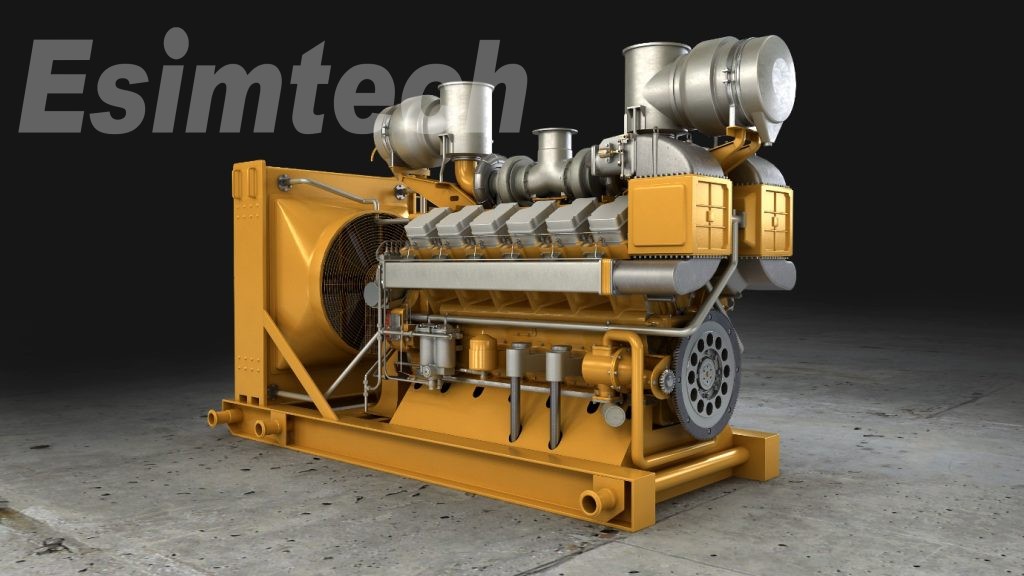The oil and gas industry is a highly intricate and ever-evolving sector that involves a multitude of processes and procedures related to exploration, production, and transportation. However, visualizing these complex operations has been a significant challenge for industry professionals. In recent years, the utilization of oil and gas animation has emerged as an effective tool for simplifying and communicating intricate procedures and concepts, ultimately enhancing efficiency, safety, and environmental awareness within the industry. This article aims to delve into the applications, advantages, types, and working processes of oil and gas animation.

Oil and gas animation serves as a valuable instrument within the industry, providing a comprehensible visual representation of complex processes and procedures. Its benefits encompass improved visualization, enhanced safety measures, optimized efficiency, and heightened environmental awareness. The applications of oil and gas animation span a wide range, including training programs, marketing initiatives, planning exercises, and environmental analysis. Nonetheless, it is essential to acknowledge that the creation of oil and gas animation can be expensive, time-consuming, and intricate, necessitating specialized training for individuals involved in the process. Continuous investment in oil and gas animation will play a pivotal role in fostering the industry's future growth and sustainability.
The Purpose of Oil and Gas Animation
Oil and gas animation serves as a critical tool within the industry, facilitating advancements in efficiency, safety, and environmental awareness. By providing easily understandable visual representations of intricate processes and procedures, animation enables stakeholders to gain a deeper understanding of the industry's operations.
The incorporation of animation into the industry aids in optimizing processes and procedures, such as well placement and production facility design, thus reducing costs and increasing overall efficiency. Furthermore, animation enhances safety by simulating hazardous operations like drilling and machinery operation. Through visualizing these operations, workers can familiarize themselves with the procedures and identify potential hazards before engaging in real-world activities.
Oil and gas animation also plays a crucial role in promoting environmental awareness. Given the industry's significant environmental impact, visualizing the associated processes and procedures helps educate stakeholders about the effects of oil and gas production on the environment. Furthermore, animation can be utilized to advocate sustainable practices and assist the industry in developing solutions to mitigate its environmental footprint.

The Benefits of Oil and Gas Animation
Enhanced Visualization: The primary advantage of oil and gas animation lies in its ability to provide clear and easily understandable visual representations of the complex processes and procedures involved in the industry. From drilling wells to transporting oil and gas through pipelines, animation can create vivid and realistic visualizations, enabling stakeholders to gain a better grasp of the processes.
Improved Safety: The oil and gas industry encompasses numerous hazardous operations that pose risks to worker safety. Through the use of animation, workers can receive training on proper procedures and familiarize themselves with potential hazards before engaging in real-world activities. Animation allows the industry to simulate hazardous operations and identify potential risks, leading to improved safety for workers.
Optimized Efficiency: Oil and gas animation aids in optimizing processes and procedures, such as well placement and production facility design. Visualizations can be analyzed to identify areas for improvement, thus reducing costs and increasing overall efficiency.
Environmental Awareness: The oil and gas industry has a profound impact on the environment. The utilization of animation helps raise awareness regarding the industry's environmental impact, including wildlife habitats and carbon emissions. Animation can be leveraged to promote sustainable practices and effectively communicate them to stakeholders.
Types of Oil and Gas Animations
2D Animations: 2D animations are employed to create simple visualizations of oil and gas processes. These animations are commonly used for training and educational purposes.
3D Animations: 3D animations generate realistic and interactive visualizations of oil and gas operations. They are utilized for presentations, marketing endeavors, and educational initiatives.
Virtual Reality Animations: Virtual reality animations enable stakeholders to experience oil and gas operations within a virtual environment. This technology can be employed to simulate hazardous operations and identify potential risks prior to their actual execution.
Augmented Reality Animations: Augmented reality animations provide real-time visualizations of oil and gas operations. They are valuable for training purposes and on-site analysis.

The Creation Process of Oil and Gas Animation
The creation of oil and gas animation involves several steps, including concept development, storyboarding, modeling, texturing, animation, lighting, and rendering.
Concept Development: The initial step entails conceptualizing the animation. The concept may revolve around a specific process or procedure in the industry, such as drilling or transportation.
Storyboarding: The subsequent phase involves creating a storyboard for the animation. Storyboarding comprises a sequence of images that illustrate the progression of the animation. It helps identify any gaps or issues before the actual creation process commences.
Modeling: The modeling phase revolves around creating 3D models of objects involved in the animation, such as drilling equipment, pipelines, and reservoirs. Specialized software is utilized to develop these 3D models.
Texturing: Texturing involves adding colors and textures to the 3D models to achieve a realistic appearance. Surfaces can be textured to resemble various materials, such as metal or rock.
Animation: Animation involves introducing movement to the 3D models. This is accomplished by animating the movement of objects, such as drilling or the flow of oil and gas through pipelines.
Lighting: The lighting phase encompasses setting up the appropriate lighting for the animation. This is achieved by positioning lights and adjusting their intensity and color to achieve a lifelike appearance.
Rendering: The final step involves rendering the animation. Rendering converts the 3D models and animation into a finished video or image sequence. The rendering process can be time-consuming, contingent upon the complexity of the animation.
By following these sequential steps, oil and gas animation can be effectively created and utilized to communicate complex processes, enhance safety, and promote environmental awareness within the industry.